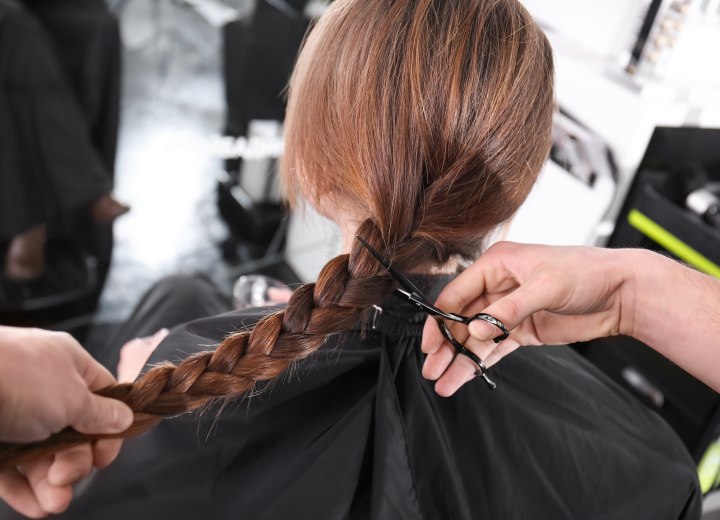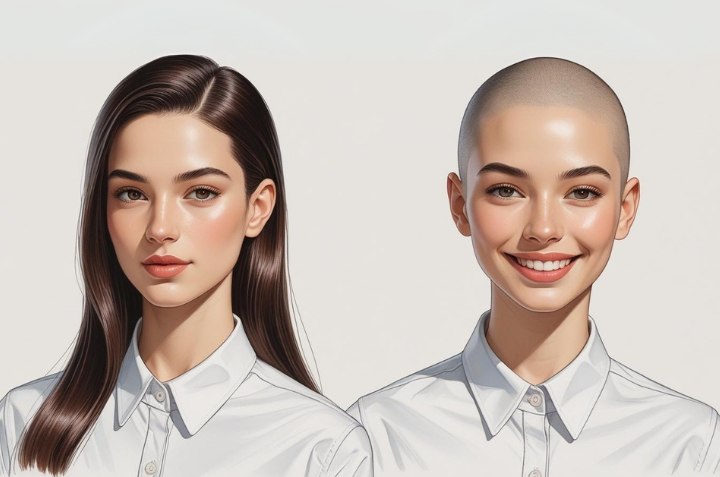Going Bald for St. Baldrick's

What makes it even worse is that someone told me that my hair might have a completely different structure when it grows back after being shaved completely off. Is this actually true? Is there a real risk that I might no longer have the straight, shiny hair I've always had when it grows back? Would it be better to get it buzzed down to almost nothing instead of going completely bald with a razor?
A: First of all, congratulations on making such a generous and meaningful sacrifice to help children battling cancer. Your commitment to St. Baldrick's Foundation is truly admirable, and you should feel proud of the funds you've raised. Now, let's tackle your concerns about what happens to your hair after shaving.
Here's what actually happens with hair texture and growth patterns over time. Our hair naturally evolves throughout our lives due to hormonal changes, aging, nutrition, and other factors. Many children start with fine, light-colored hair that gradually becomes coarser and darker as they enter their teenage years. Similarly, as we age into our thirties, forties, and beyond, our hair often becomes thinner, may change color naturally, and can develop different wave patterns due to changes in hormone levels, particularly estrogen and testosterone.
The key point is that these changes happen gradually over months and years, not suddenly after a haircut or shave. When you have long hair, these subtle transitions are often masked because the weight of your existing hair can pull out slight waves or curls that might be developing in the new growth. You might not notice that your hair has been slowly changing texture over the past few years because the length and weight disguises these variations.

Think of it this way: if you've had the same hairstyle for several years, you might not realize that your hair has been slowly evolving. When you start fresh with very short hair, you're essentially getting a clean slate to observe your hair's current natural state without any previous styling, chemical treatments, or length affecting how it looks and behaves.
Another factor to consider is that very short hair simply behaves differently than long hair. When your hair is only a quarter-inch or half-inch long, it may appear to have more texture or wave than you remember because there's no weight pulling it down. This is completely normal and doesn't indicate a permanent change in your hair's structure.
Regarding your question about whether to get a buzz cut versus a complete shave, the choice won't affect your hair's regrowth pattern or texture. However, there are some practical considerations that might influence your decision. A complete shave with a razor will give you the full "bald" experience and might be more impactful for your fundraising photos and the symbolic nature of your St. Baldrick's participation. On the other hand, leaving a very short buzz cut might reduce some of the initial discomfort as your hair begins to grow back, since you won't experience the slightly prickly sensation that can occur when hair first emerges from completely smooth skin.

Your hair will likely grow back at roughly the same rate it did before, typically about half an inch per month, though this can vary slightly from person to person. Within three to six months, you should have enough length to start styling your hair again, and within a year, you'll likely have several inches to work with if you choose to grow it out.
One thing that might actually be beneficial about this experience is that you'll get to start fresh with completely healthy hair. If you've been using heat styling tools, chemical treatments, or harsh products over the years, your new growth will be free from any accumulated damage. Many people find that their hair feels stronger and healthier after growing back from a very short cut, simply because they're not dealing with years of accumulated styling damage on the ends.
Your participation in St. Baldrick's represents solidarity with young cancer patients who lose their hair due to treatment, and your fundraising efforts contribute directly to research that could save lives. While it's completely natural to feel nervous about such a dramatic change to your appearance, try to focus on the positive impact you're making and remember that hair, unlike the lives you're helping to save, will grow back.